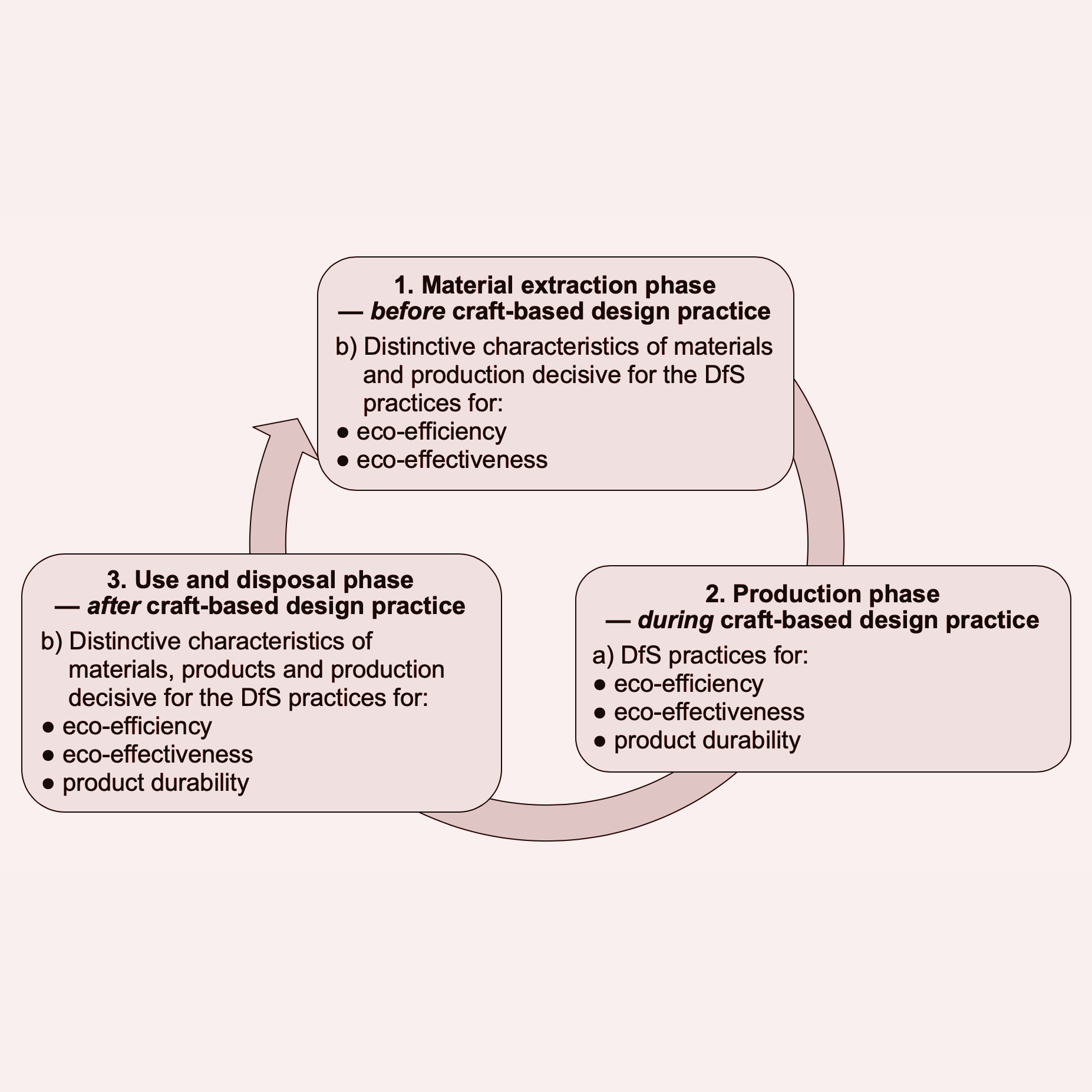Developing design literacy for sustainability
Lower secondary students’ life cycle thinking on their craft-based design products
DOI:
https://doi.org/10.7577/formakademisk.1725Sammendrag
This article discusses the case study Case Keramikk, examining students’ use of experiential learning from a craft-based design practice in life cycle thinking on their products. Data were constructed through semi-structured group interviews with students of a Norwegian lower secondary school and thematic analysis based on the principles and practices of design for sustainability (DfS). The interview questions engaged the students to assess their practice and products and to estimate environmental considerations. The students used experiential learning that correspond with the DfS practices of eco-efficiency, eco-effectiveness and product durability in the production phase, as well as the distinctive characteristics of materials, products and production decisive for practice of these in the material extraction and use and disposal phases. These reflections enhance students’ development of design literacy for sustainability and strengthen their democratic participation in research for development of education in craft-based design for sustainability.

Nedlastinger
Publisert
Hvordan referere
Utgave
Seksjon
Lisens
- Forfatteren(e) beholder sin opphavs- og kopieringsrett til eget manuskript, men gir tidsskriftet varig rett til 1) å fremføre manuskriptet for offentligheten i den opprinnelig publiserte digitale form, og 2) å registreres og siteres som første publisering av manuskriptet.
- Forfatteren må selv forvalte sine økonomiske kopieringsrettigheter overfor eventuell tredjepart.
- Tidsskriftet gir ingen økonomisk eller annen kompensasjon for innsendte bidrag, medmindre det er gjort særskilt avtale om dette med forfatteren(e).
- Tidsskriftet plikter å arkivere manuskriptet (inklusive metadata) i den opprinnelig publiserte digitale form, i minst ett dertil egnet åpent tilgjengelig langtidsarkiv for digitalt materiell, som for eksempel i de norske universitetenes institusjonsarkiv innen rammen av NORA-samarbeidet.
Verket vil bli publisert OpenAccess med en Creative Commons 4.0-lisens som tillater alle å lese, dele og tilpasse innholdet, også kommersielt, under lisensvilkårene:
Dette verket må tilskrives/ krediteres på riktig måte, en lenke må gis til CC-BY 4.0-lisensen, og endringer som er gjort må angis på en rimelig måte, men ikke på noen måte som antyder at lisensgiveren støtter deg eller din bruk.



